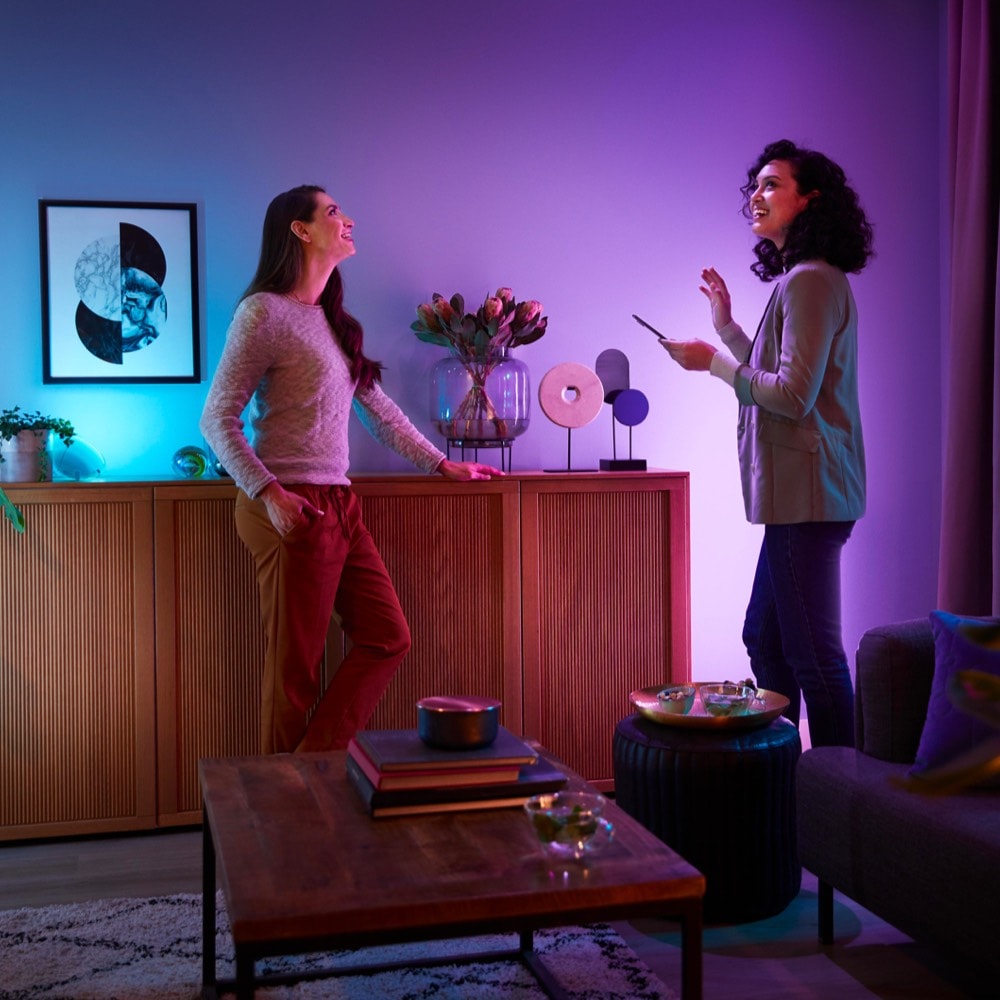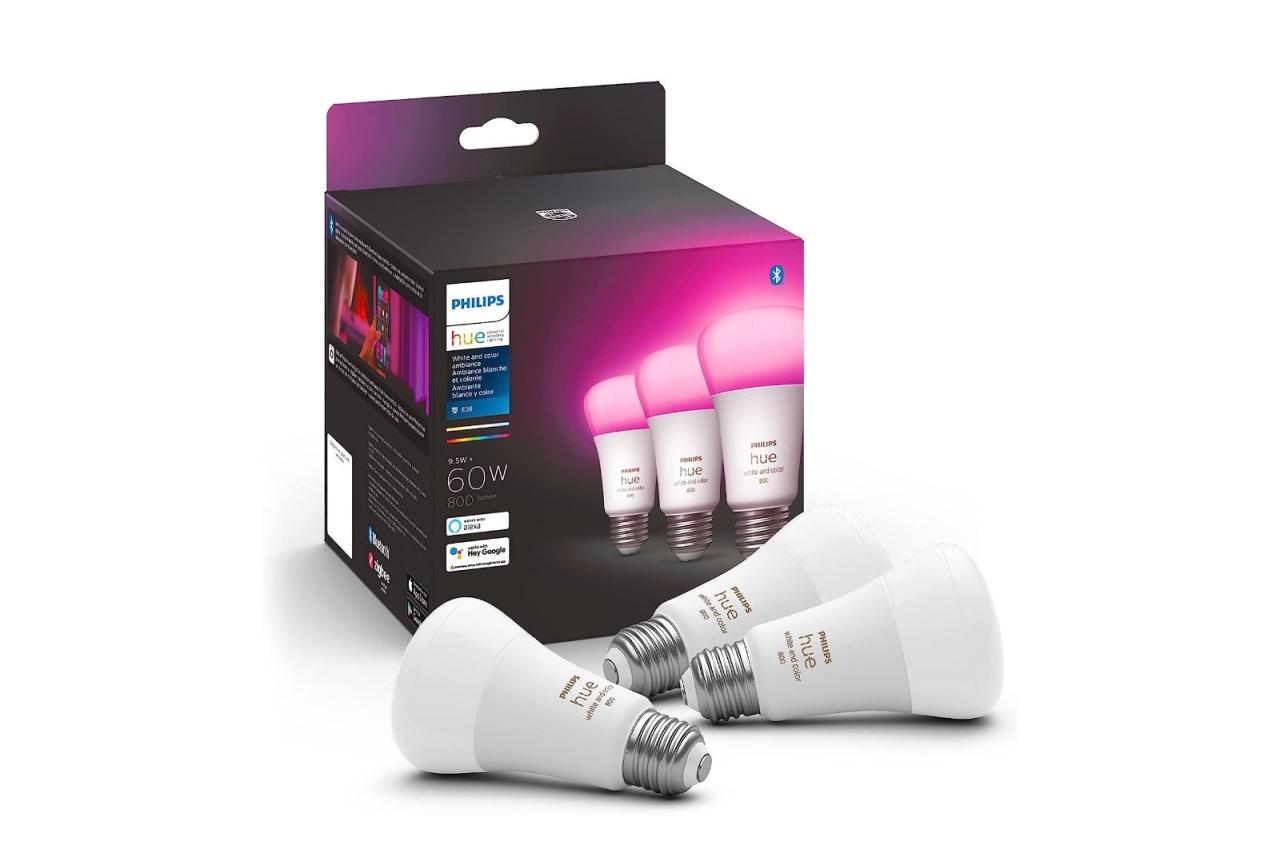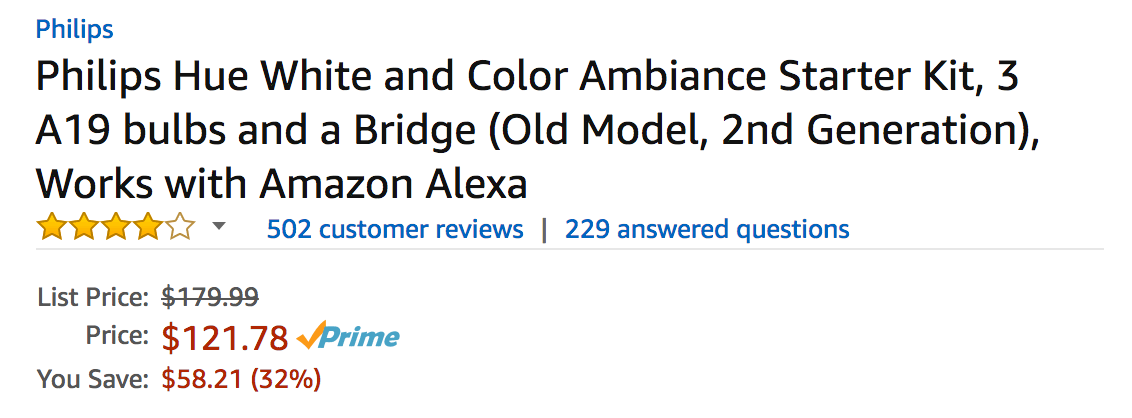Philips hue apple homekit is the gateway to transforming your home into a fully automated haven of smart lighting. With the perfect fusion of Philips Hue’s vibrant smart bulbs and the intuitive control of Apple HomeKit, users can create mesmerizing lighting experiences tailored to their lifestyles. This integration not only elevates ambiance but also brings convenience and energy efficiency to the forefront of home automation.
Delving into the seamless setup and powerful features of this collaboration, we explore how you can enhance your living space while enjoying the simplicity of managing your lighting through Siri and the Home app.
Overview of Philips Hue and Apple HomeKit Integration
Philips Hue represents a leading brand in the realm of smart lighting, offering a wide range of products that elevate everyday lighting to an immersive, customizable experience. The integration of Philips Hue with Apple HomeKit takes this experience a step further, allowing users to control their lighting seamlessly through Apple’s ecosystem. This combination of innovative lighting technology and intuitive control systems enhances home automation and personalizes the living space like never before.
Philips Hue smart lighting operates on a network of bulbs, light strips, and lamps that can be easily managed via a mobile app or smart home device. Users can adjust brightness, change colors, and set schedules to create the ideal ambiance for any occasion. With Apple HomeKit integration, the Philips Hue system becomes even more powerful. HomeKit allows users to control their Hue lights alongside other compatible smart home devices using Siri voice commands or the Apple Home app, creating a unified and efficient smart home environment.
Compatible Devices with Philips Hue and HomeKit
A variety of devices work harmoniously with Philips Hue and Apple HomeKit, enhancing the smart home experience. Understanding these compatible devices is essential for maximizing your smart lighting setup.
The following devices are notable for their compatibility:
- Philips Hue Bridge: The central hub that connects all Philips Hue lights and enables HomeKit integration.
- Philips Hue White and Color Ambiance Bulbs: These versatile bulbs allow users to select from millions of colors and shades of white.
- Philips Hue Light Strips: Flexible and colorful, ideal for accent lighting or creating unique designs throughout the home.
- Philips Hue Bloom: A portable accent light that can change colors and is perfect for mood lighting.
- Philips Hue Go: A battery-powered smart lamp that can be used anywhere, offering versatile lighting options on the go.
- Apple HomePod Mini: This smart speaker not only plays music but also acts as a hub for controlling HomeKit-enabled devices with voice commands.
The integration of these devices with Philips Hue allows users to create scenes that include other HomeKit accessories, such as smart thermostats, locks, and cameras, enhancing the overall automation and functionality of the home.
“Philips Hue and Apple HomeKit together facilitate a seamless environment where lighting is just the beginning of home automation.”
Setting Up Philips Hue with Apple HomeKit

Integrating Philips Hue with Apple HomeKit allows users to control their smart lighting seamlessly through the Apple ecosystem. This integration not only enhances convenience but also elevates the overall smart home experience. Below, we Artikel the necessary steps for successful setup, alongside troubleshooting tips and a checklist to ensure all devices are ready for integration.
Step-by-Step Process for Connecting Philips Hue to Apple HomeKit, Philips hue apple homekit
To connect your Philips Hue system to Apple HomeKit, follow these detailed steps to ensure a smooth integration:
1. Ensure Compatibility:
Confirm that your Philips Hue Bridge is updated to the latest firmware. This can typically be checked through the Philips Hue app.
2. Download Necessary Apps:
Install the Philips Hue app and the Apple Home app on your iOS device to facilitate the integration process.
3. Set Up Your Philips Hue Bridge:
– Connect your Philips Hue Bridge to your internet router using an Ethernet cable.
– Power on the Bridge and wait until the lights on the Bridge indicate that it is connected.
4. Open the Philips Hue App:
Launch the Philips Hue app and follow the prompts to create or log into your Philips Hue account.
5. Add Lights to the App:
– Within the Philips Hue app, navigate to the ‘Lights’ section and add your Philips Hue bulbs.
– Make sure the bulbs are powered on and within range of the Bridge.
6. Link to Apple HomeKit:
– In the Philips Hue app, go to ‘Settings’ and select ‘HomeKit & Siri’.
– Tap on ‘Pair with HomeKit’ and follow the on-screen instructions.
– You will be prompted to scan a HomeKit QR code displayed on the Bridge. Alternatively, you can enter the HomeKit setup code.
7. Verify Integration:
Open the Apple Home app and ensure your Philips Hue lights are listed under ‘Home’. You can now control your lights using Siri or the Home app.
Troubleshooting Common Setup Issues
Despite the generally straightforward setup process, users may encounter issues. Here are some common problems and their solutions:
– Bridge Not Detected:
Ensure that the Bridge is connected to the router and powered on. Check for network connectivity issues, as a stable internet connection is crucial.
– Bulbs Not Responding:
Make sure the bulbs are within the range of the Bridge and powered on. Reset any unresponsive bulbs by turning them off and on multiple times.
– HomeKit Pairing Issues:
If HomeKit pairing fails, try restarting both the Philips Hue Bridge and your iOS device. Ensure you are using the latest versions of both the Philips Hue app and iOS.
Checklist for Ensuring All Devices Are Ready for Integration
Before starting the integration process, it’s essential to check the following items to ensure everything is in place for a smooth setup:
– Philips Hue Bridge is updated to the latest firmware version.
– Philips Hue bulbs are correctly installed and powered on.
– iOS device is updated to the latest version of iOS.
– Philips Hue app and Apple Home app are installed and updated on your device.
– Network connectivity is stable, with the Bridge connected to the router.
– HomeKit setup code for the Bridge is available and ready for scanning.
By following these steps and using the provided checklist, you can effectively set up and troubleshoot your Philips Hue system with Apple HomeKit, ensuring a seamless smart home experience.
Features and Benefits of Using Philips Hue with Apple HomeKit: Philips Hue Apple Homekit

The integration of Philips Hue with Apple HomeKit not only enhances the functionality of smart lighting but also offers a seamless user experience that combines the best of both ecosystems. This partnership empowers users to control their lighting with effortless precision, ensuring that every space can be personalized to suit individual preferences and needs.
Voice Control through Siri
One of the standout advantages of using Philips Hue lights with Apple HomeKit is the ability to control them via voice commands through Siri. This feature provides hands-free operation, allowing users to adjust their lighting without needing to physically interact with any devices.
-
“Turn on the living room lights” – Instantly illuminates the desired space with a simple command.
-
“Set the bedroom to 50% brightness” – Achieves the perfect ambiance for relaxation or reading.
-
“Change the hallway lights to blue” – Instantly alters the color to suit moods or themes.
These commands not only enhance convenience but also encourage energy efficiency by allowing users to manage their lighting more effectively throughout the day.
Automation Options within HomeKit
The automation capabilities available for Philips Hue within Apple HomeKit offer a level of customization that makes managing home lighting intuitive and efficient. Users can set up schedules, create scenes, and automate responses to different triggers.
- Scheduling: Users can program their lights to turn on or off at specific times, ensuring that they never come home to a dark house.
- Scenes: With HomeKit, users can create scenes that adjust multiple lights at once to predefined settings, such as “Movie Night” or “Dinner Party,” enhancing the experience without manual adjustments.
- Triggers: Smart home triggers allow lights to respond to conditions such as location, time of day, or even other smart devices. For instance, lights can turn on when you arrive home or dim when you start a movie.
These automation features simplify everyday routines, enhance security, and provide a personalized touch to home environments.
Energy Efficiency of Philips Hue Lights
Philips Hue smart bulbs are designed with energy efficiency in mind, and their management through HomeKit further enhances this benefit. By utilizing HomeKit’s automation and scheduling features, users can not only reduce their electricity consumption but also extend the lifespan of their bulbs.
-
“Philips Hue bulbs consume up to 80% less energy than traditional incandescent bulbs” – A significant reduction in energy costs is achievable.
- Adaptive Schedules: By programming lights to turn off when not in use or adjust brightness based on natural light, users can actively participate in energy-saving initiatives.
- Energy Monitoring: Integration with HomeKit allows for tracking of energy usage, enabling users to make informed decisions about their lighting habits.
This focus on energy efficiency not only benefits the environment but also translates to lower utility bills, making Philips Hue with HomeKit a smart choice for both homeowners and eco-conscious consumers.
Advanced Tips for Optimizing Philips Hue and HomeKit Usage

Integrating Philips Hue lights with Apple HomeKit offers a powerful way to elevate your smart home experience. By employing advanced techniques, you can fully harness the capabilities of your lighting system, creating a personalized and efficient environment that enhances your daily life.
Creating Personalized Lighting Scenes
One of the most exciting features of Philips Hue with HomeKit is the ability to create personalized lighting scenes that match your mood or activity. This customization allows for a unique atmosphere in each room of your home. Consider the following methods to design your lighting scenes:
- Use the Hue App: The Philips Hue app allows you to choose from pre-set scenes or create your own by adjusting brightness, color temperature, and colors. For example, create a “Relax” scene with soft, warm white lights and a “Party” scene with vibrant colors.
- Integrate with HomeKit: Use the Apple Home app to set scenes that combine various smart home devices. For instance, a “Movie Night” scene could dim your Hue lights while also lowering your smart blinds and turning on your TV.
- Explore Third-Party Apps: Several third-party applications specialize in scene creation and can offer more advanced options, like syncing lights with music or movies, creating dynamic light shows.
Scheduling and Automation for Home Security
Using scheduling and automation with Philips Hue lights through HomeKit can significantly enhance your home security. Well-timed lighting can simulate occupancy, deterring potential intruders. Here are effective strategies to implement:
- Set Timed Lighting: Schedule lights to turn on and off at specific times, especially when you are away. For example, have your living room lights turn on at sunset and off at midnight, mimicking your daily routine.
- Configure Presence Detection: Use motion sensors available in the HomeKit ecosystem to trigger your Hue lights. For example, lights can automatically turn on when someone approaches your front door or driveway.
- Create “Away” Scenes: Set up an “Away” scene within HomeKit that randomly turns lights on and off in different rooms at varying times to simulate activity when you are not home.
Integrating Philips Hue with Other Smart Home Devices
To maximize the benefits of your Philips Hue smart lighting, integration with other smart home devices via HomeKit is essential. This integration creates a cohesive ecosystem that enhances convenience and functionality. Here are some integration ideas:
- Smart Thermostats: Link Philips Hue lights with smart thermostats to create comfortable environments. For instance, set your lights to adjust based on the temperature—cooler temperatures can trigger cooler light tones, while warmer temperatures can activate warmer light tones.
- Smart Security Cameras: Connect your Hue lights with security cameras to enhance visibility. When motion is detected by the camera, the related Hue lights can automatically brighten to ensure the area is well-lit.
- Voice Assistants: Utilize Siri to control your Philips Hue lights through voice commands, allowing for hands-free operation. For example, saying “Hey Siri, set the dining room lights to 50%” will adjust your lights without needing to reach for your device.
Effectively optimizing your Philips Hue and HomeKit integration can transform your living space into a smart home that is not only beautiful but also functional and secure.
General Inquiries
What devices are compatible with Philips Hue and Apple HomeKit?
Most Philips Hue lights, including bulbs, light strips, and lamps, are compatible, alongside various Apple devices such as iPhones, iPads, and HomePods.
Can I control Philips Hue lights remotely using Apple HomeKit?
Yes, as long as you have an Apple device set up as a home hub, you can control your Philips Hue lights remotely from anywhere.
Is Siri voice control available for Philips Hue lights?
Absolutely! You can use Siri to control your Philips Hue lights with voice commands, making it easy to adjust settings on the fly.
What should I do if my Philips Hue lights won’t connect to Apple HomeKit?
Ensure your Philips Hue Bridge is updated to the latest firmware, check your Wi-Fi connection, and try resetting the bridge if issues persist.
Can I create lighting schedules with Philips Hue and Apple HomeKit?
Yes, you can set up schedules and automations through the Home app to have your lights turn on or off at specific times.
Samsung Smart Things is revolutionizing the way we interact with our homes. By integrating various smart devices, it allows users to control everything from lighting to security seamlessly. This connectivity is essential for anyone looking to create a fully automated home environment. For more insights, check out samsung smart thing and explore its features.
The philips hue motion sensor adds an exciting dimension to your smart lighting setup. It intelligently detects movement, automatically adjusting the lights to enhance energy efficiency and comfort. This innovative technology not only saves electricity but also creates the perfect ambiance for any occasion, making it a must-have for smart home enthusiasts.